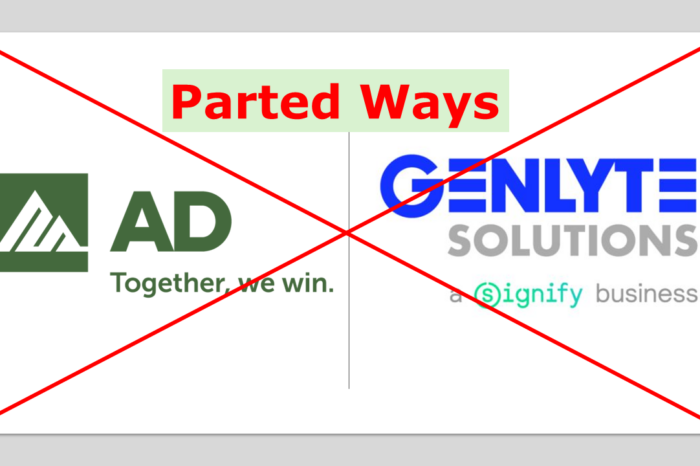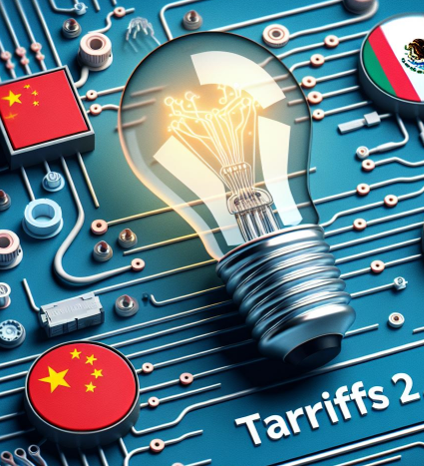Distributors – Maximize Your Volume Rebates with a Strategic Revenue Plan
 Last week we shared highlights from our recent research on the State of Volume Rebates and mentioned our upcoming webinar that will share the findings from both distributors and manufacturers.
Last week we shared highlights from our recent research on the State of Volume Rebates and mentioned our upcoming webinar that will share the findings from both distributors and manufacturers.
But, given the importance of rebates to the net profitability of distributors, I reached out to a friend and former distributor client, Greg Smith, to share his first-hand experience, and best practices, to help distributors optimize their rebate earnings.
For those who don’t know Greg, he owned a small electrical distributor, sold the business to a regional distributor and then, over the years, became their EVP. He had responsibility for marketing, purchasing / supplier relations and more. He left the company and started his own consultancy, G Group Holdings which focuses on helping distributors improve profitability by improving their pricing and operations proficiency, among other things. Greg understands the importance of rebates and shared his thoughts.
Plan to Profit Through Rebates
For many electrical distributors, volume rebates account for most, if not all, of their earnings before interest and taxes (EBIT), so it’s essential to track these deals and maximize them. The definition of volume rebates discussed here is the rebate paid to distributors when the distributor exceeds certain quarterly or annual manufacturer purchase thresholds. Sometimes this is referred to as ‘growth rebates’ because distributors have met a certain growth threshold, and their relevant spending with a supplier has grown by a specific volume, value, or percentage above a determined baseline.
Several marketing/buying groups in the marketplace promote and support volume rebates for their distribution members. If you are a member of one of these groups, it’s a step in the right direction; however, you still must have a hands-on approach to managing your rebates. Whether you’re a member of these groups or not, know that volume rebate growth opportunities exist and should be part of your strategic sales/marketing and profit plan for the year. Proactive distributors who plan, negotiate with their vendors, and implement a strategic rebate process build stronger channel partnerships with their partners and successfully maximize their year-end profits.
Plan: Develop a Plan That Will Maximize Your Rebates
Managing rebates to realize thousands of dollars in additional NET profit is not necessarily tricky, but it is time-consuming and takes a coordinated effort between management, sales, and marketing. The senior team must set Volume rebate Revenue and Margin dollar goals annually. Once defined, communicating the plans to everyone in the company is paramount to its success. Departments that have primary responsibility for the program’s success will be Sales, Marketing, Finance, and Purchasing. The team then needs a set of tactics to execute this plan.
Manage Your Rebates for Next Year by Planning Them This Year
Heading into the fourth quarter is primetime for budgeting and setting plans to execute the following year. During this planning season, decide which manufacturers your company will partner with and consider market trends and the marketplace. Remember the manufacturers’ position in the marketplace as you research potential manufacturer partnerships and what kind of support you would have from them. Think about which vendors you partnered with the previous year and customer demand for products and services compared with the year-earlier volume. Researching the vendors prepares you for negotiation opportunities with vendors and manufacturers that are sure to come.
Negotiate the Terms of the Deal with Manufacturers
Many distributors accept what manufacturers offer without much negotiation, especially as marketing/buying groups members. If you have a manufacturing deal within a buying group, find out what is essential to the manufacturer and negotiate an additional deal over and above the buying group deal. Make sure you understand “all” the deals within your buying group because some are straightforward while others require planning and strategy. Review any big buys you placed year-end the previous year and negotiate them out of this year’s target. Use the KISS principle, “Keep It Simple Silly.” Do not overcomplicate the deal and do make sure any agreement you make you can track within your ERP system. This is instrumental to your success! Negotiate all deals, so they pay back to dollar one, versus negotiating solely based on only growth. Remember, distributors, you have the power to negotiate the deal if you have a history of growing top-line with your manufacturer partner.
Execute: Communicate with the Team and Delegate Tasks Aligned to the Rebate Plan
After planning and negotiations are agreed upon and completed, the next step is to get the organization involved. Each department plays a significant role in the plan for rebates and revenue growth at certain stages. Once you decide which manufacturers you are creating rebate plans with, announce the list to your organization and then assign internal rebate responsibility to a senior member of the team.
Construct a comprehensive or cross-discipline committee that includes purchasing, finance, marketing, senior team member, sales, project sales, and pricing to oversee and manage the process. Create a platform (such as a spreadsheet) from which all deals can be evaluated and tracked against their individual goals. You want your spreadsheet to become a forecast of sorts for your contract deals.
The marketing and sales department(s) will be responsible for developing a year-long promotional plan that supports the revenue growth of the rebate plans. Create and put together Sales Performance Incentive Fund (SPIFFs) for the sales teams. (Yes sometimes it feels like you are spiffing salespeople to go to the bathroom, however with my experience it works and generally has a 50X return) Marketing and sales will report the results of those promotional efforts during the rebate committee meetings. Once team members have taken on their tasks, hold internal meetings monthly throughout the year to keep the organization on track as you carry out your plans.
Track: Check Your Progress Throughout the Year in Quarterly Stages
The monthly committee meetings allow you to check how your organization is performing, giving the team an opportunity to report to the internal rebate senior member. It’s essential to have stages at which you check in with your vendors concerning rebates, using the information received from your organization during committee meetings.
Stage one (January – April)
Update spreadsheet with YTD numbers monthly. Start projecting the entire year, using your historical norms to feed the projections. Monitor marketing activity to ensure it supports the rebate plans, and then send monthly updates to sales on your progress. Make sure your project team is fully aware of these activities, as they usually have discretion on where to place through stock small project business. Review non-rebate manufacturer’s product sales and purchases to ensure you are not bleeding sales and purchases away from a rebate vendor.
Stage Two (May – September)
Provide vendors with YTD progression. When you’re six months into the plan, compare your results to historical projections and if projections point to a shortfall of 20 percent or more, work to re-negotiate the plan. Make sure you have data that substantiates the shortfall. Here is when you ask vendors for additional “home run” targets. Hit a number 10 percent higher than the target number, and they’ll add half a percent back to dollar one. Using different volumes and rebate percentage scenarios, determine how you will reach your stated rebate budget. In other words, consider whether to focus more on vendor A versus vendor B because of the rebate percentage or current YTD volume. Redirect sales and or marketing teams if need be. Double down on plans where your performance has exceeded expectations, or the vendor has offered additional incentives.
Stage Three (October – December)
Continue the activities from the previous two stages. Where it makes sense, negotiate one-time end-of-year buys to reach certain purchase thresholds. Ask for lower stock costs and don’t give these lower costs or discounts away. Treat this as a one-time PO discount, so you do not lower your COGS or matrix price in your ERP. Ask about extended dating; if you are purchasing a 60- or 90-day supply, ask for 90 days of dating. Build additional marketing activities and sales promotions (SPIFFs), increasing sales activity.
Go Beyond Marketing and Buying Groups to Manage Your Rebates
The planning and tactics involved in rebate management should ultimately support developing your business’s strategic direction. Managing your volume rebate programs will result in substantial increased NET profit dollars. Actively Managing and Tracking your rebate progress ensure you leave no money on the table regarding your Volume Rebate deals. The extra dollars you receive from refunds flow directly to your bottom line. The distributors who actively work their buying/marketing group programs and programs outside the group to maximize their rebate return are the ones who realize hundreds of thousands of dollars more than their peers.
We’re happy to help you design a strategy that will increase your volume rebate dollars while creating stronger channel partnerships. Click here to visit G Group Holdings.”
And if you haven’t registered for our State of Volume Rebates webinar, it is Thursday, November 17 at 11:00AM. If you can’t make it, register anyways to get a copy of the recording and the white papers. If you don’t want to do that, reach out to me and I can send you the presentation and the white papers (manufacturer and distributor).























